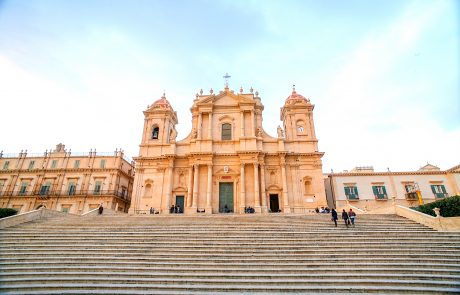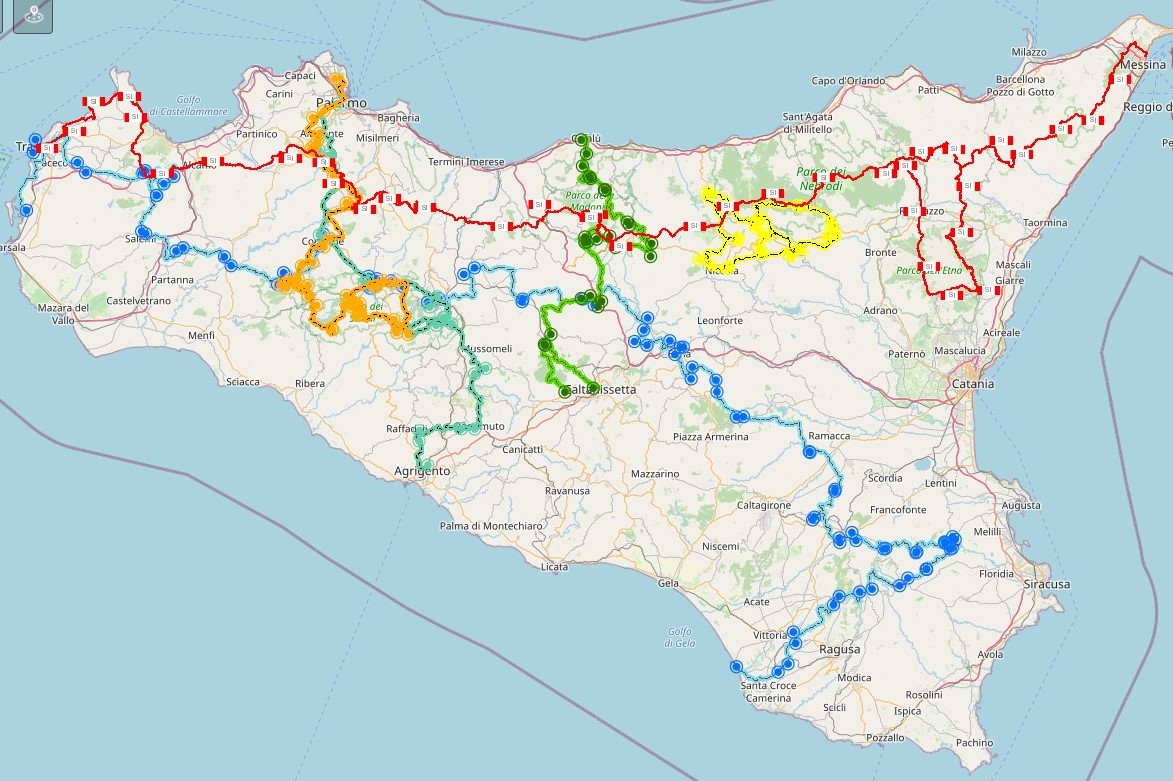European Path E1
Detail
The European Path E1 is a route for trekkers that links Cape North in Norway to Cape Passero in Sicily, crossing the entire continent for a total length of 7000 km. A challenge for real walkers or a route that can be modulated by region, depending on one’s level of fitness and interests.
Let us discover together the Sicilian section of the European Path E1, a true finis terrae to be reached at a slow pace, enjoying a landscape that crosses mountains, reserves, valleys and villages by the sea.
The European Path E1 in Sicily starts from the ridge of the Nebrodi Mountains, in the province of Messina, and, winding through forests and karst gorges with naturalistic sites of great value, reaches in 16 stages the fascinating locality of the Island of Correnti, in Portopalo di Capo Passero, in the province of Syracuse.
It starts in Messina, the initial stage of the Sicilian section of the E1 trail, with a crossing of the Nebrodi Park and a stop at the Maressa refuge and the Posto Leoni (or Postoleone) lake, a nature oasis in the municipality of Santa Lucia del Mela (ME), a medieval village with a castle of the same name.
The stage at Fondachelli-Fantina (ME) allows for a nature excursion along the Dorsale Peloritana, an ancient track about 70 km long that ends at the foot of the imposing peak of Rocca di Salvatesta.
The fourth stage along the European Path E1 takes us to the centre of the Bosco di Malabotta Nature Reserve, an Eden in the territory of Montalbano Elicona (ME). Don’t miss a visit to the historical centre, a medieval jewel among The Most Beautiful Villages in Italy. Part of the municipality of Malvagna (ME) falls within the same reserve and offers a visit to the Convent of the Friars Minor and the Cuba of Malvagna, one of the typical Byzantine “cube” in Sicily.
We reach the slopes of Mount Etna and the Pernicana Fault, among the geological sites to visit around Linguaglossa (ME), the sixth stop on the European Path E1 in Sicily, rich in churches from the 16th and 18th centuries and part of the historic Circumetnea Railway.
We continue our itinerary on the European Path E1 by crossing the so-called “Pearl of the Nebrodi”. Sinagra (ME), home to an important medieval castle that was once the home of the Altavilla family, famous for its hazelnut production.
Eighth stage along the E1 trail, Nicolosi. Not by chance known as the “Gateway to Etna”, it introduces us to the province of Catania with the naturalistic scenery of the Monti Rossi, Mount Etna’s Silvestri Craters and the cable car that leads straight to the summit of Europe’s highest volcano.
From Nicolosi to Catania the step is relatively short and requires a stop to discover the “Etnean City” par excellence and u Liotru (the Elephant Fountain, the city symbol). Catania is a Baroque jewel in lava stone, as well as the birthplace of composer Vincenzo Bellini.
Tenth and eleventh stages of the European Path E1 in Sicily are Carlentini and Ferla, in the province of Syracuse. The first locality, near Lake Lentini, is famous for its prized Sicilian Red Oranges and the Rock Church of the Crucifix; the second, among The Most Beautiful Villages of Italy, is a pearl of Sicilian Baroque, famous for its churches and the not-to-be-missed Archaeological Park of the Rock Necropolis of Pantalica.
Continuing on, we come to Palazzolo Acreide (SR), part of the UNESCO “Baroque Cities of the Val di Noto” circuit in the Iblei Mountains. There are extraordinary churches and noble palaces in the centre, as well as the archaeological remains of ancient Akrai, with the monumental Greek Theatre and the stone giants known as “I Santoni”, part of the rock sanctuary dedicated to the mysterious cult of the Magna Mater.
The European Path E1 in Sicily continues along the “Valley of Baroque” passing through Canicattini Bagni (SR), where it is possible to visit the TEMPO Museum, dedicated to the traditional art of textiles, and the rupestrian site of the Jewish Hypogeum of Cugno Case Vecchie.
Stage number 14 of the European Path E1 is the splendid “Pearl of Sicilian Baroque“, the town of Noto (SR). Rebuilt in the 18th century after the terrible earthquake that destroyed it, it is now a UNESCO World Heritage Site for the magnificence of the churches, palaces and architectural elements that embellish its historic centre.
Penultimate stop before literally plunging into the sea, Pachino (SR), home of the eponymous PGI Cherry Tomato, which gives us the magic of the famous sailors’ village of Marzamemi, an enchantment painted blue.
Have you walked the entire E1 European Path from Norway? You deserve a crystal-clear dip at the end point of this very long continental trail. The island of Correnti, in Portopalo di Capo Passero (SR), awaits you with its natural paradise of marine flora and fauna.
Regional web map of paths and routes for soft mobility realised by LabGis Osservatorio Turistico della Regione Sicilia, in collaboration with FIAB Sicilia and CAI Sicilia.
Share this content!
LOCATION
DURATION
Distance
153 KM
Difficulty
High
Categories
AROUND








